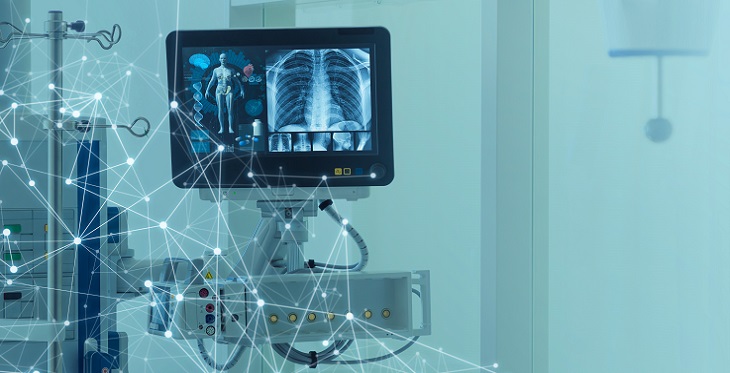When patients are critically ill, the intensive care unit (ICU) is there to help pull them back from the brink. As a medical student in the midst of pre-clinical coursework, especially in the middle of a global pandemic, the role of telecommunications within our world is ever more apparent. So how does this relate to delivering quality critical care to patients that may lack access to such care? ICU telemedicine. Before and even during the ongoing COVID-19 pandemic, telemedicine has been an instrumental tool in being able to deliver care while mitigating risk to both patients and providers alike, all while bringing intensive care into the modern era. However, there is very little awareness of this emerging field of telehealth as it pertains to ICU services.
Fifty years ago, stand-alone ICUs were unheard of and not central to the healthcare system of that time and intensive care was still an emerging specialty. By the 1970s, ICUs became more common place in large hospitals, but were disorganized and lacking interprofessional team care.1 Despite this lackluster start, ICU telemedicine first started in 1977 and was found to be an expensive, yet feasible modality to improve patient care and establish multihospital networks.2 Today, with the vast improvements to telecommunications, it is no surprise that the rising use of these technologies is becoming a normal means of delivering critical care, with these services being used in at least 20% of hospitals in the United States.3 While the trend of using telehealth services to monitor critically ill patients is increasing, the question still remains if these services actually provide better outcomes for patients.
In the pre-clinical years of medical school, it is established early on that risk vs. benefit analysis is foundational to medical decision making. As a mode to deliver care, the same risk vs. benefit analysis has been used to evaluate the efficacy of tele-ICU healthcare. Data centered on the mortality and length of stay of ICU patients who received telehealth services had been mixed in its early evaluations, with some studies suggesting a lack of improvements.3 However, more recent studies are showing the benefits of using ICU telehealth to provide 24/7 intensivist care. For instance, a study presented at the Society of Critical Care Medicine’s virtual 50th Critical Care Congress, Dr. Chiedozie I. Udeh and his colleagues reviewed about 154,000 ICU patients within the Cleveland Clinic Health System and found 70% of those patients received ICU telemedicine services. Of those 70%, there was an 18% decrease in mortality and patients were discharged an average of 2 days sooner.4,5 While this is just one study outlining some benefits associated with tele-ICU, more and larger studies are starting to mirror the same findings.
Telemedicine is seemingly commonplace for primary care services, especially after the inception of the COVID-19 pandemic, however, even as a medical student, tele-ICU is not a common knowledge modality. It stands to make sense that in an area where medicine is more centered on physiological principles rather than actual bedside care, telemedicine can play a key role in providing 24/7 intensivist care to the critically ill. The Association of Academic Medical Centers is now strongly encouraging medical schools to develop curricula for all medical students, residents, and practicing physicians.6,7 It is noteworthy that the University of Arizona’s College of Medicine-Tucson has been a pioneer in telemedicine, telehealth, and telepresence for years.8,9,10,11,12
- Kerlin, M. P., Costa, D. K., & Kahn, J. M. (2021). The society of critical care medicine at 50 years: Icu organization and management. Critical Care Medicine, 49(3), 391–405. https://doi.org/10.1097/ccm.0000000000004830
- Vranas, K. C., Slatore, C. G., & Kerlin, M. P. (2018). Telemedicine coverage of intensive Care Units: A Narrative Review. Annals of the American Thoracic Society, 15(11), 1256–1264. https://doi.org/10.1513/annalsats.201804-225cme
- Udeh, C., Udeh, B., Rahman, N., Canfield, C., Campbell, J., & Hata, J. S. (2018). Telemedicine/Virtual ICU: Where Are We and Where Are We Going?. Methodist DeBakey cardiovascular journal, 14(2), 126–133. https://doi.org/10.14797/mdcj-14-2-126
- Boyles, S. (2021, February 3). Telemedicine in ICU Saves Lives, Study Finds. Medical News. https://www.medpagetoday.com/meetingcoverage/sccm/91032
- Frangou, C. (2021, April 20). Overnight Telemedicine Services Reduce Mortality In ICU Patients. https://www.generalsurgerynews.com/In-the-News/Article/04-21/Overnight-Telemedicine-Services-Reduce-Mortality-In-ICU-Patients/63145
- Galpin, K., Sikka, N., King, S. L., Horvath, K. A., Shipman, S. A., & AAMC Telehealth Advisory Committee. (2021). Expert consensus: Telehealth skills for health care professionals. Telemedicine and e-Health, 27(7), 820-824. https://doi.org/10.1089/tmj.2020.0420
- Telehealth competencies across the learning continuum. In: AAMC New and Emerging Areas in Medicine Series. AAMC; 2021. https://store.aamc.org/telehealth-competencies-across-the-learning-continuum.html
- Latifi, R., Doarn, C. R., & Merrell, R. C. (Eds.). (2021). Telemedicine, Telehealth and Telepresence: Principles, Strategies, Applications, and New Directions. Springer Nature. https://doi.org/10.1007/978-3-030-56917-4
- Latifi, R., Weinstein, R. S., Porter, J. M., Ziemba, M., Judkins, D., Ridings, D., ... & Leyva, F. (2007). Telemedicine and telepresence for trauma and emergency care management. Scandinavian journal of Surgery, 96(4), 281-289. https://doi.org/10.1177%2F145749690709600404
- Doarn C.R. (2021) Technological Advances Making Telemedicine and Telepresence Possible. In: Latifi R., Doarn C.R., Merrell R.C. (eds) Telemedicine, Telehealth and Telepresence. Springer, Cham. https://doi.org/10.1007/978-3-030-56917-4_16
- Latifi R., Osmani K. (2021) Telemedicine for Intensive Care. In: Latifi R., Doarn C.R., Merrell R.C. (eds) Telemedicine, Telehealth and Telepresence. Springer, Cham. https://doi.org/10.1007/978-3-030-56917-4_20
- Latifi R. et al. (2021) Surgical Telementoring and Teleproctoring. In: Latifi R., Doarn C.R., Merrell R.C. (eds) Telemedicine, Telehealth and Telepresence. Springer, Cham. https://doi.org/10.1007/978-3-030-56917-4_27

